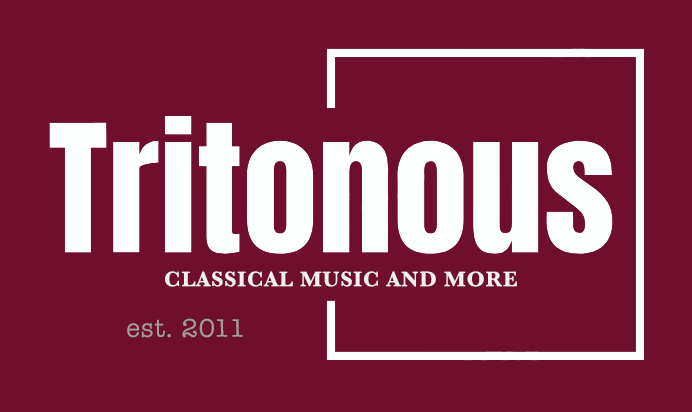Andrew Ford: The Shortest History of Music
Old Street Publishing
234 pages, 45 images
Reviewed 21 October 2024
Global musical history digested into just over 200 pages; Ford’s book deftly manages the compression whilst bringing out a wide variety of over-arching themes and influences, well beyond the conventional Western classical history
Creating a coherent history of music has always been a tricky business and in the last fifty years, as classical music expands in various directions, it has become trickier. The historical view of musical development in classical music has had to be replaced by intersections, influences and just plain oddities. But more recently, the sheer notion of a history of classical music has changed.
Contemporary composers draw influences from a range of musics, and those accustomed to living in non-European countries reflect a whole range of other classical musics. How do you refer to contemporary composers and their influences without drawing in a history of the other musics in the globe?
This is a challenge, different countries have different conventions and Western classical music’s heavily rule-based, written language is only one way of defining things. It is relatively easy to talk about 16th century European classical music if you have the manuscripts and treatises, but it is far harder to do justice to the music of another culture where the entire musical structure is based on oral tradition.
The Australian composer, writer and broadcaster Andrew Ford has decided to have a go and in his The Shortest History of Music he attempts to cram a coherent history of music into just 210 pages. The book is published by Old Street Publishing as part of its ‘The Shortest History of…’ series with subjects ranging from China, to Democracy to Sex to Economics.
Ford takes a thematic approach, rather than a chronological one. After a short introduction where he talks about his methodology, there are five main chapters:
- The Tradition of Music: from Prehistory to the Present
- Music and Notation: Blueprints for Building in Sound from 1400 BCE to the Present
- Music for Sale: Paying the Piper from 1000 BCE to the Present
- Music and Modernism: Reinventing the Art from 1150 to the Present
- Recording Music: from 1900 to the Present
The book concludes with an epilogue, What is Music? and there are eight pages of further reading.
The problem with such an approach is that inevitably things get missed out. Ford has a narrative and admits that he includes examples because they make a particular point rather than attempting to make the book a list of ‘the greatest’, whatever that might mean.
These chapters are then arranged into short sections, each considering one aspect of the theme. The result can feel a little breathless at times especially in the chapters that range over the globe extensively. But Ford clearly has the sort of mind that relishes picking up links, resonances and influences in the most unlikely places.
His first chapter begins with a consideration of what music is, whether it is a language (no) and whether it is universal (not really). He ranges quite widely here, considering the origins of music in various societies and his dwelling on music in Australian First Nations gives a fascinatingly different aspect to the Western classical approach of music simply as song. From here we shoot about between Egypt, China, Japan and beyond, considering the various court musics, before thoughts on stringed instruments takes us to the banjo and on to the way 19th century American music developed as it did because of the cultural melting pot in the USA. Ford’s point is the most musical cultures have been influenced by and influence others, so that the historical antecedents of the instruments of the Western symphony orchestra takes you across the globe.
For his second chapter he considers music notation, and whilst there is a fascinating exposition of different notations, including cuneiform, the majority of the chapter focuses on Western classical because notation is so deeply ingrained. He makes a very important point:
‘The distinguishing features of Greek, Arabic, Persian and Indian music are melody, rhythm and, in many cases, timbre. The same may be generally said of the traditional musics of Asia and Africa, America and Australia.’
Consideration of the way Western music uses harmony, where it is both functional and structural, leads us to counterpoint and polyphony, but also to the point that in Japanese music notation makes much more consideration of articulation and timbre. When we reach more recent times, we get composers synthesising, introducing traditional instruments and traditional elements into the Western symphony orchestra, to richly rewarding effect.
The third chapter begins with a consideration of the availability of music, the idea of it being controlled, the way different societies transmit music from oral tradition to travelling musicians to Haydn and music printing. From here, the chapter rather focuses on the Western tradition, touching on Women composers, the development of music venues and much else besides. He has an ear/eye for striking and telling facts, so as the fact that approximately 80% of music performed in 1800 was by living composers whilst in the three decades from 1850 the proportion shrunk to 20%. From here we touch on recordings and music’s various uses in the modern world.
For chapter four, we consider how music constantly reinvents the past to create something new, from John Cage’s 4’33” to the way Tchaikovsky’s music was original yet securely within a tradition. What follows is a series of thematic sections, so that we might move quickly from Monteverdi to bel canto to Wagner as we consider the use of chromaticism. We have all the familiar elements here, the serialists, folk-music, Stravinsky, jazz, and Nina Simone, but there are political elements too, the way modernism was political in the Soviet Union and other states.
All these different musics were recorded in the 20th century, and Ford’s final chapter is an engaging romp through the way recordings came to define the 20th century and we move freely between musical styles and the way the contemporary composers might.
Ford’s book does not so much give answers as raise further questions. It is also full of fascinating facts, and whilst reading it I kept giving my husband snippets of interesting trivia. Except, of course, in the context of Ford’s narrative, such small moments build into larger ones. He never really defines what music is, and at the end he sensibly relies on John Cage’s definition as ‘organised sound’.
As I have said, the book can feel a bit breathless at times, and the way Ford incorporates the wide variety of different musical cultures can sometimes feel artificial. Yet he also tracks influences across time and space in a way which gives you a different sense of the music you know.
To give you an idea of the book’s breadth, here are the first dozen entries in the index!
- 42nd Street (film)
- aak (Korean court music)
- Adventures of Robin Hood, The (film)
- Aelred of Riveaux
- Speculum caritatis
- akonting
- al-Shushtari, Abu al-Hasan
- Albigensian Crusade
- ‘All the Thigns You Are’
- Allen, Fulton (see Fully, Blind Boy)
- Altenberg, Peter
- American Musician and Arts Journal
- Andrews, Julie
The blog is free, but I’d be delighted if you were to show your appreciation by buying me a coffee.
Elsewhere on this blog
- Inventive and imaginative: Olivia Fuchs’ successfully reinvents Rimsky Korsakov’s The Snowmaiden for English Touring Opera – opera review
- Portraits of a troubled family: Bernstein’s Trouble in Tahiti & A Quiet Place at the Royal Opera House – opera review
- Leading with a love that inspires: Tafelmusik has a new collaboration with violinist Rachel Podger & a new disc of Haydn symphonies – interview
- A themed programme with an imaginative difference: Music from Pole to Pole with City of London Sinfonia and atmospheric physicist Dr Simon Clark – concert review
- Sound magic: En Couleur from the percussion group, Trio Colores – record review
- From expressionist nightmare to radiant energy: Schoenberg’s Pierrot Lunaire & Schubert’s String Quintet at Hatfield – concert review
- Charpentier’s Actéon & Rameau’s Pygmalion: a perfect double-bill offering a delightful, entertaining evening – opera review
- Intimate & communicative: Solomon’s Knot brings its distinctive approach to Monteverdi’s Vespers of 1610 at Wigmore Hall – concert review
- Waiting till they feel they have something to say: I chat to Trio Bohémo about their debut disc – interview
- On tour from New York, the Philip Glass Ensemble stopped off in Cambridge in a presentation by the Cambridge Music Festival – concert review
- Home






%20in%20Trial%20by%20Jury.%20Credit%20Mihaela%20Bodlovic..jpg?w=670&resize=670,446&ssl=1)



